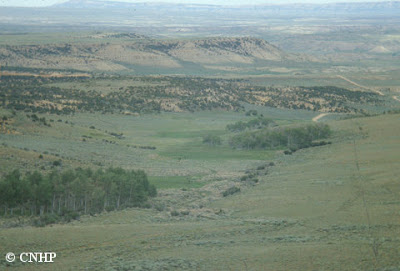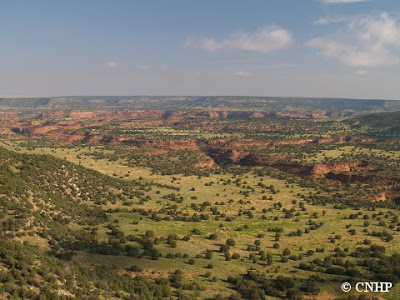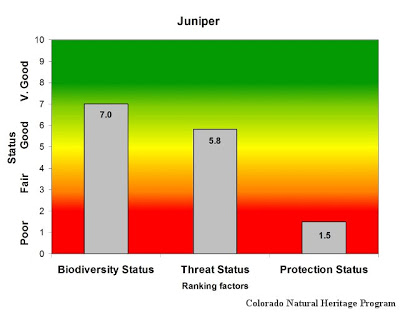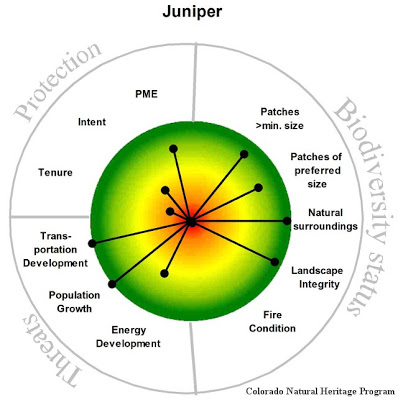Juniper woodlands and savannas in Colorado include the Inter-Mountain Basins Juniper Savanna, found in northwestern Colorado, and the Southern Rocky Mountain Juniper Woodland and Savanna, occurring in the southeastern portion of the state.
 |
| An example of Inter-Mountain Basins Juniper Savanna. |
 |
| Southern Rocky Mountain Juniper Woodland and Savanna. |
Together, these two types account for about 558,000 acres in Colorado. Pinyon trees are typically not present in these open juniper woodlands because sites are outside the ecological or geographic range of pinyon pine. The juniper savannas of northwestern Colorado are dominated by Utah juniper, while those in southeastern Colorado are characterized by one-seed juniper and Rocky Mountain juniper. Northwestern Colorado stands occur on lower mountain slopes and plateaus, often on dry, rocky areas, at elevations ranging from 4,900 to 7,550 feet. In the canyons and tablelands of the southern Great Plains this system forms extensive cover at some distance from the mountain front, at elevations from 4,100 to 6,200 feet.
These woodlands are used by a variety of birds, small mammals, and reptiles. The juniper titmouse, at the edge of its range in Colorado, nests in tree cavities, while the collared lizard makes use of the rocky terrain under the junipers. The rare long-nosed leopard lizard may occasionally be found in either juniper or pinyon-juniper woodlands in western Colorado, while the New Mexico thread snake is occasionally found in these woodlands in southeastern Colorado. One of our state’s rarest bird species, the gray vireo, is known from these woodlands in southeast Colorado.
Over 75% of Colorado’s juniper woodlands are on privately owned lands, especially in southeastern Colorado. The remainder are generally located on federal lands managed by the Bureau of Land Management and other agencies, or on Colorado State Land Board holdings. Consequently, this ecological system is generally under protected in Colorado, although its extent and condition have been little impacted by human activities.
 |
| Overall biodiversity, threat, and protection status scores for juniper in Colorado. |
 |
| A “windrose” graph depicting juniper status for individual scoring factors. |




